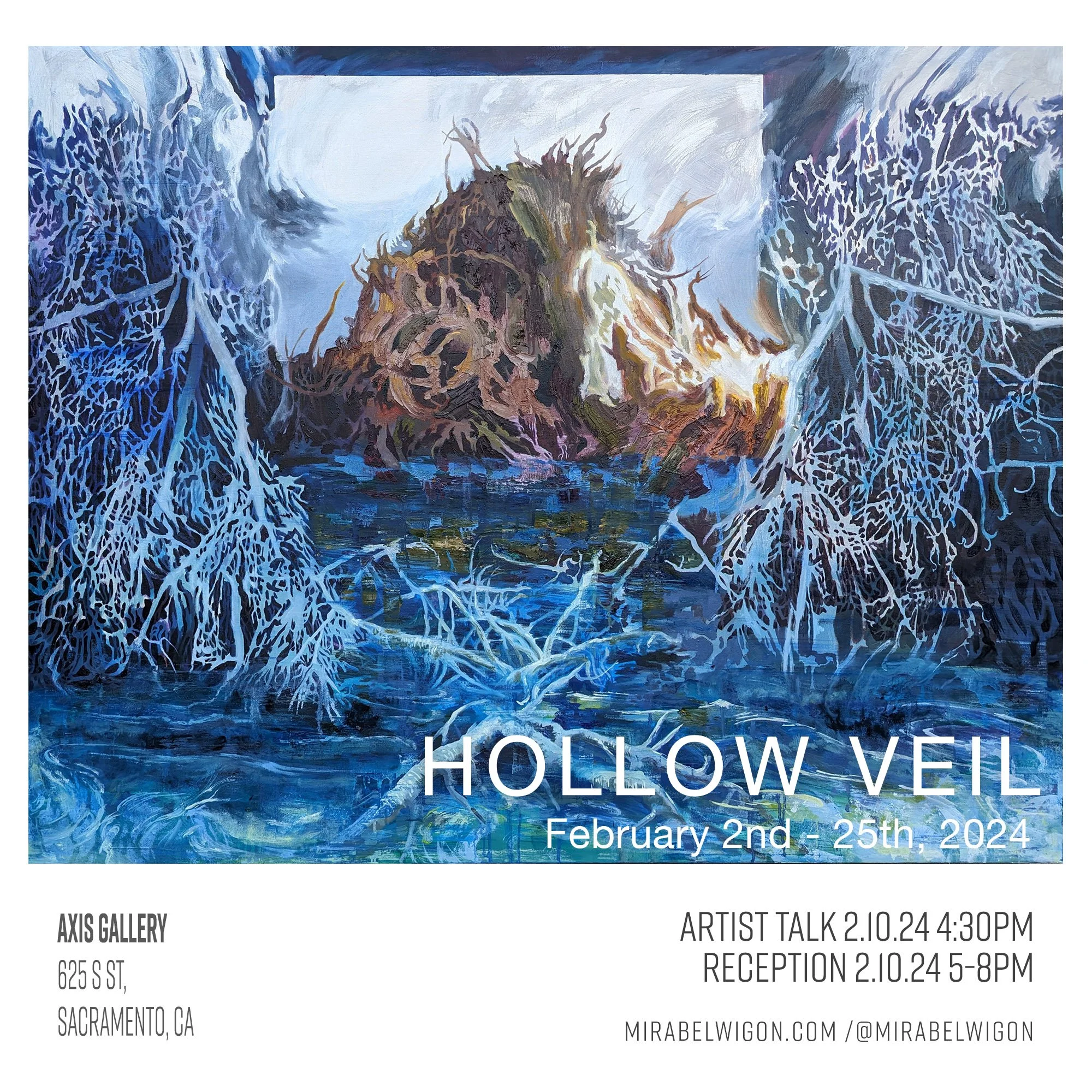
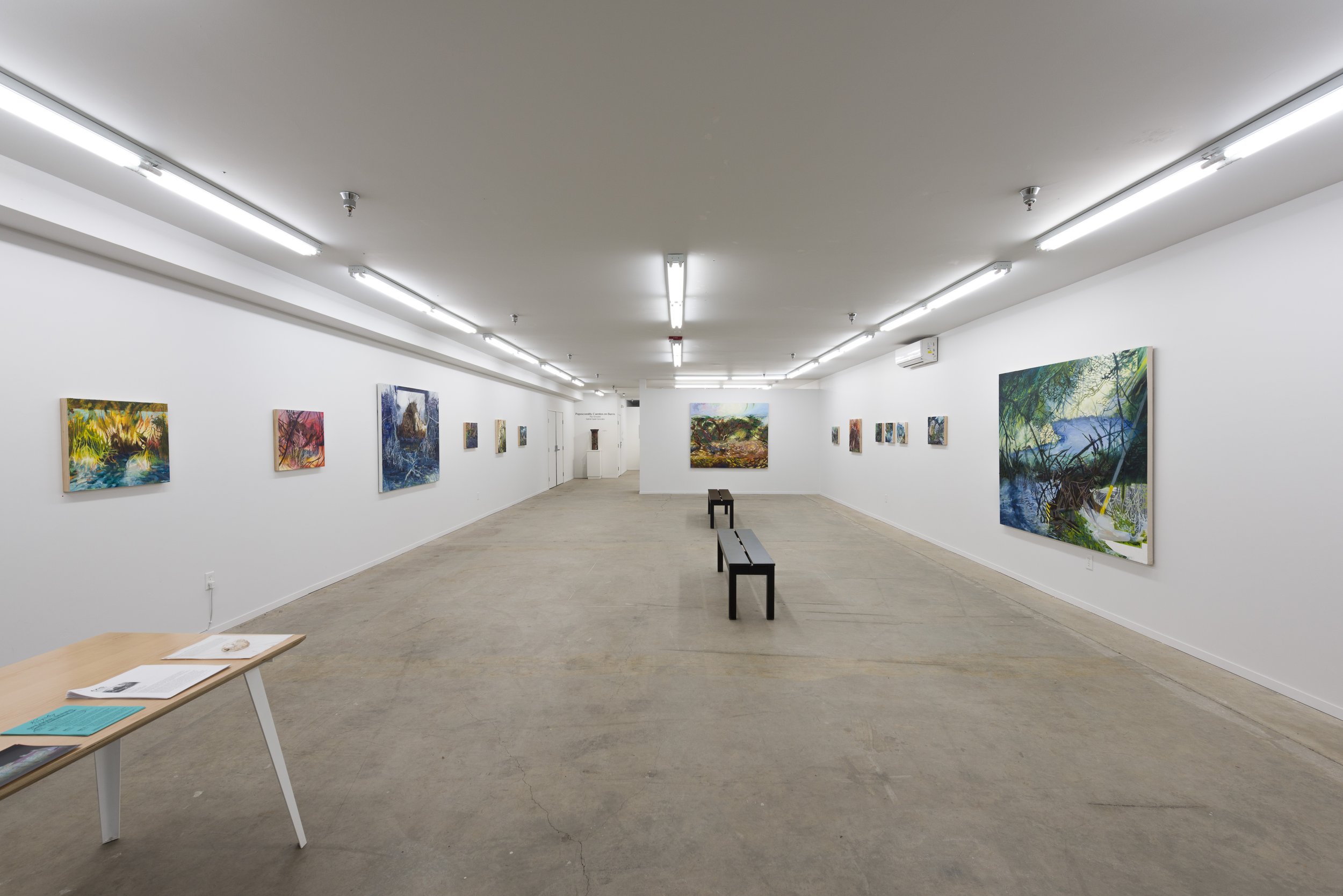
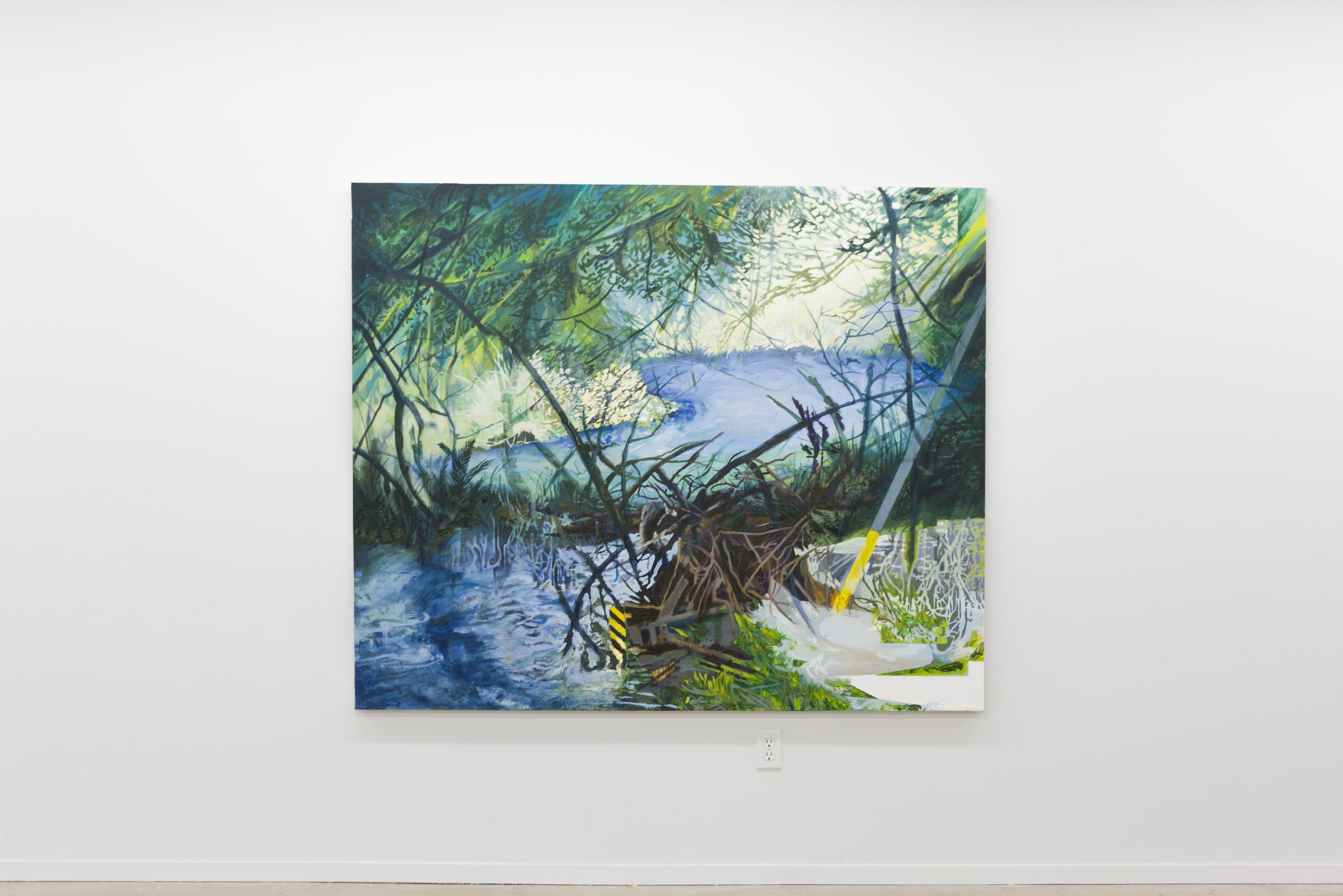
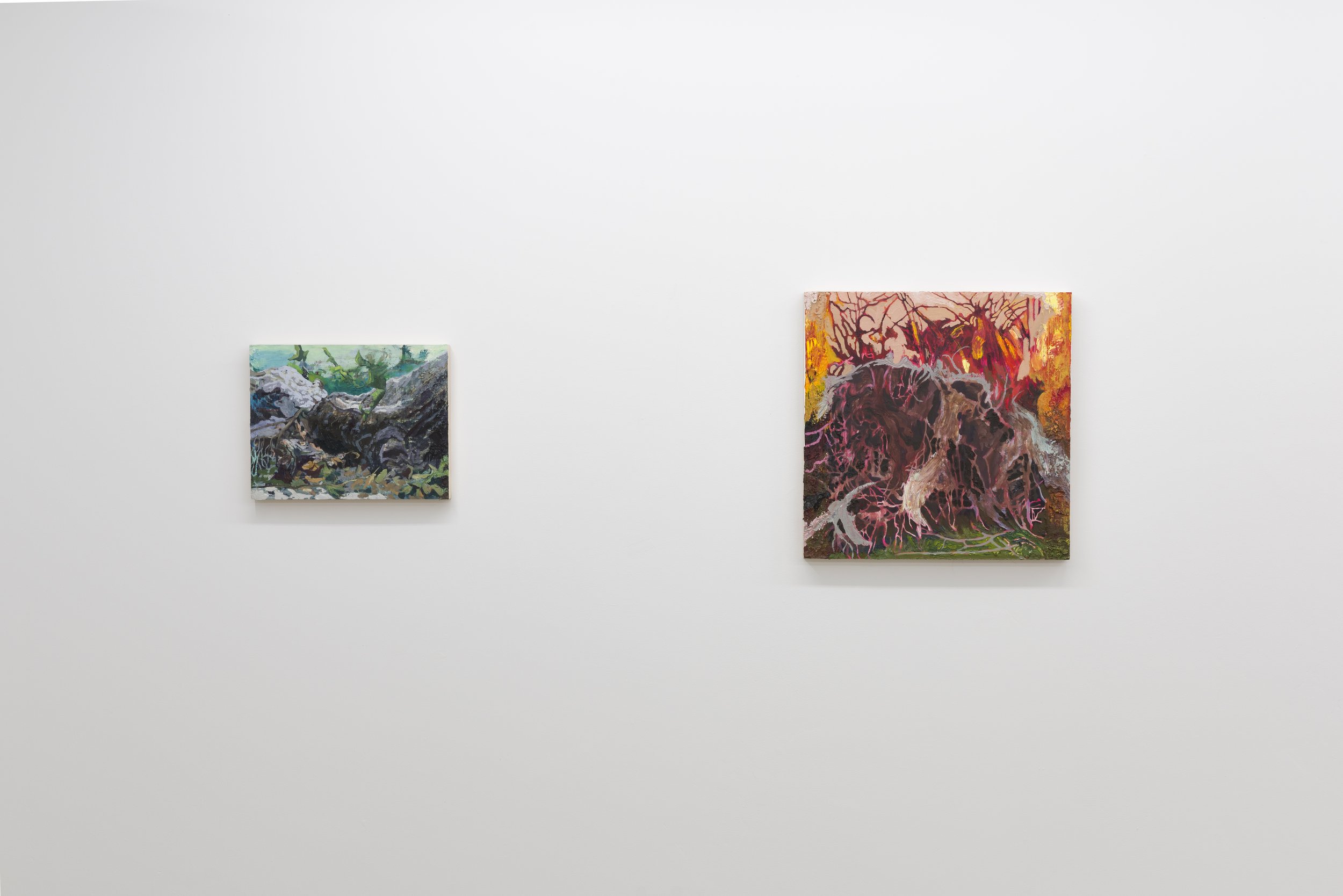
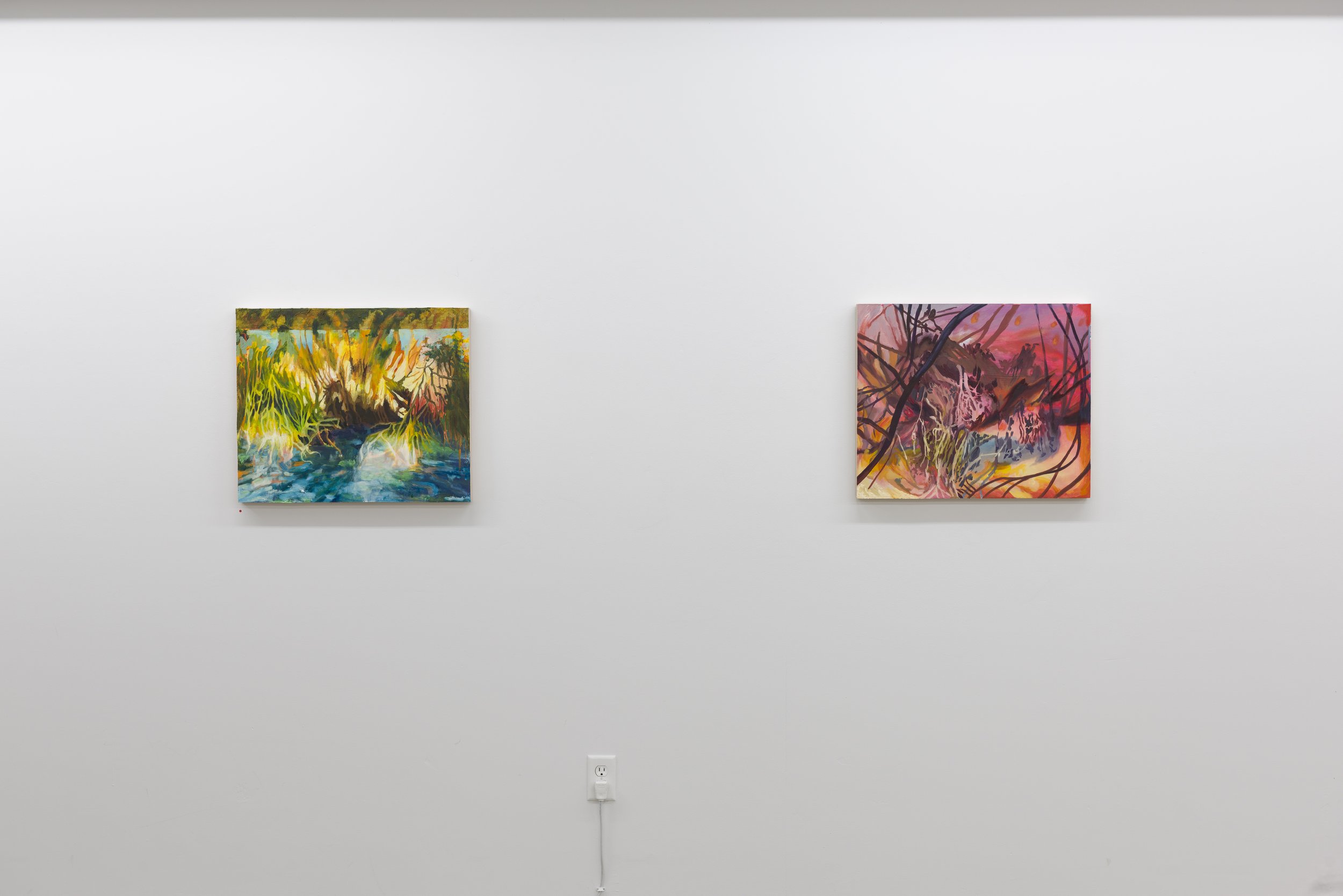
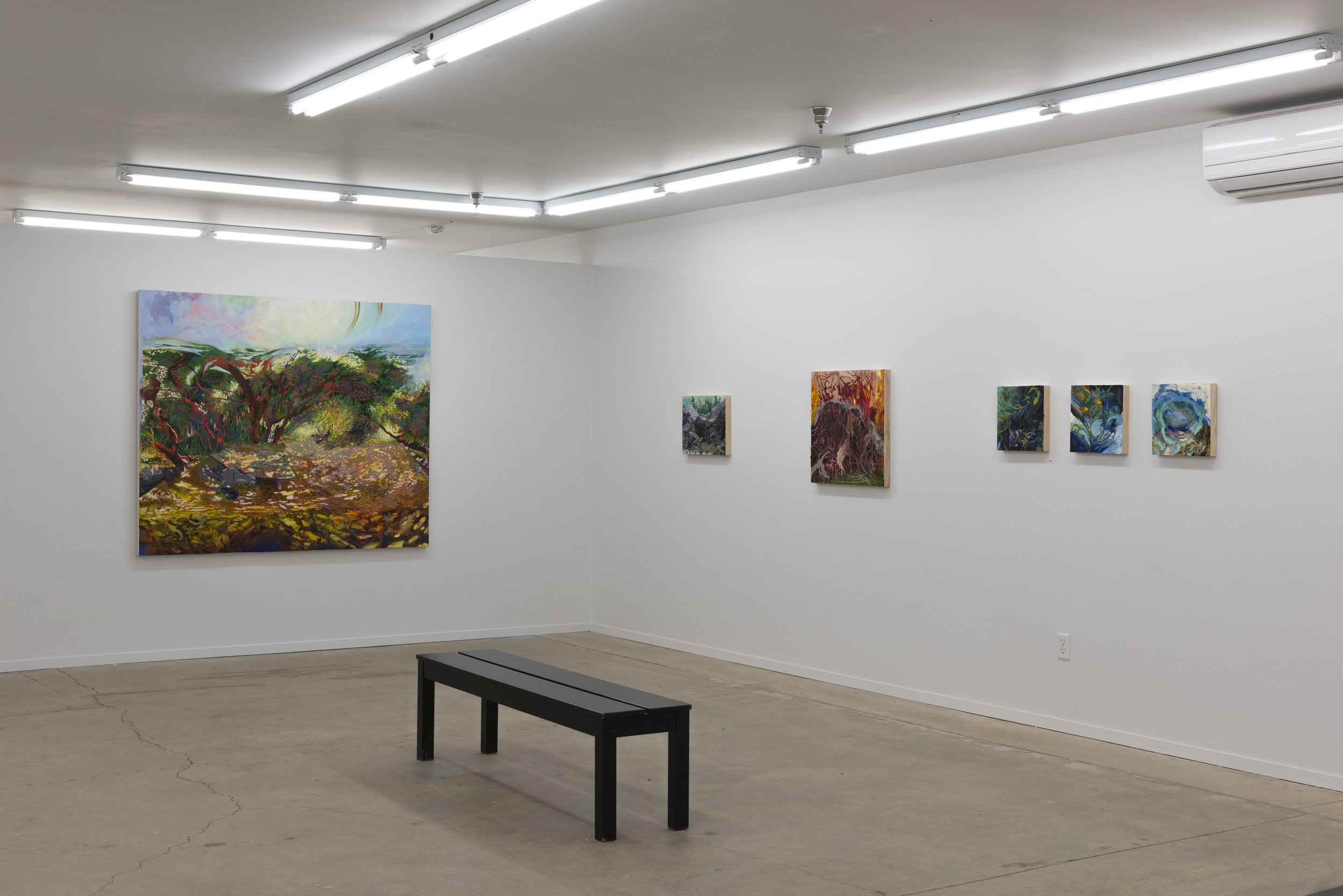
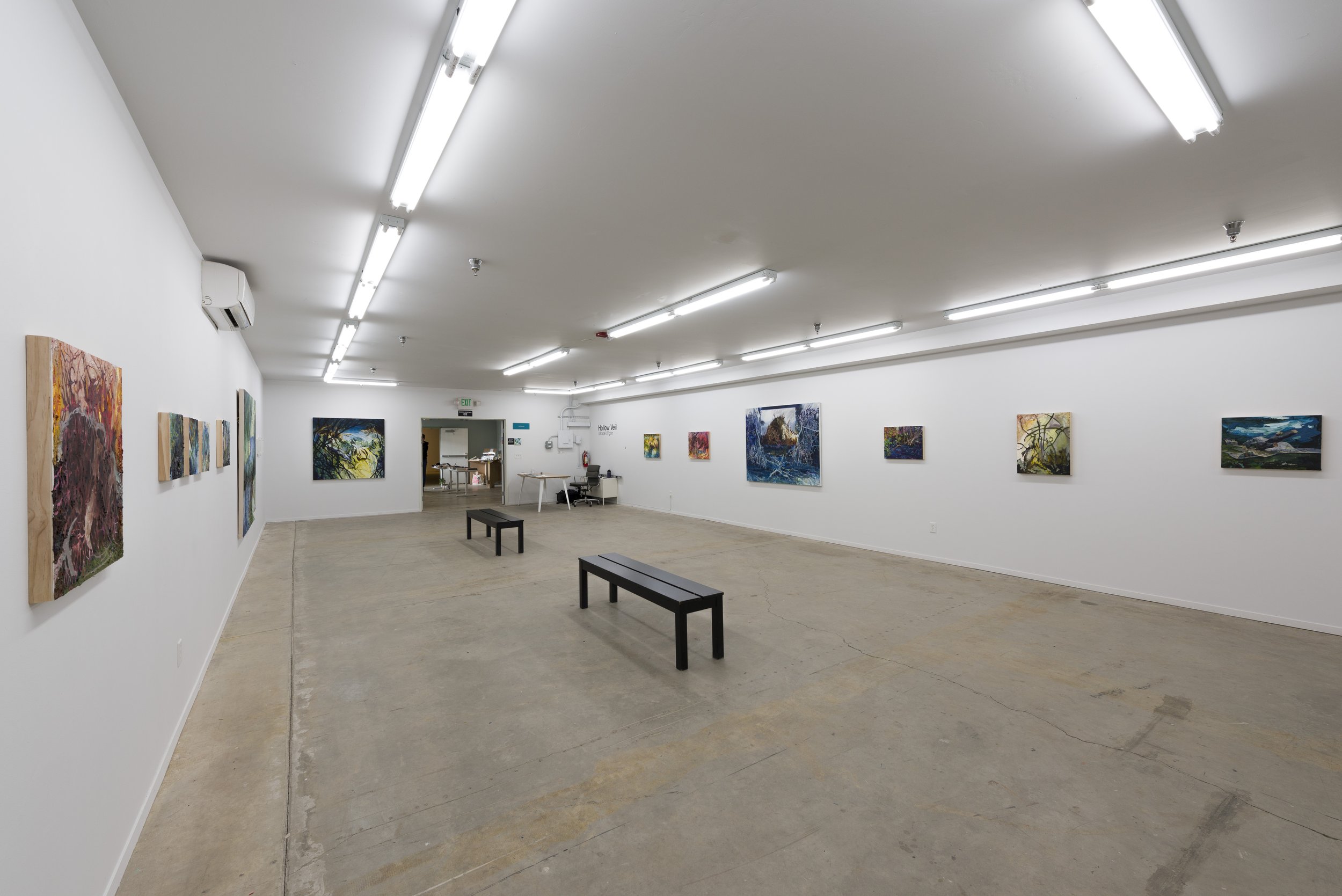
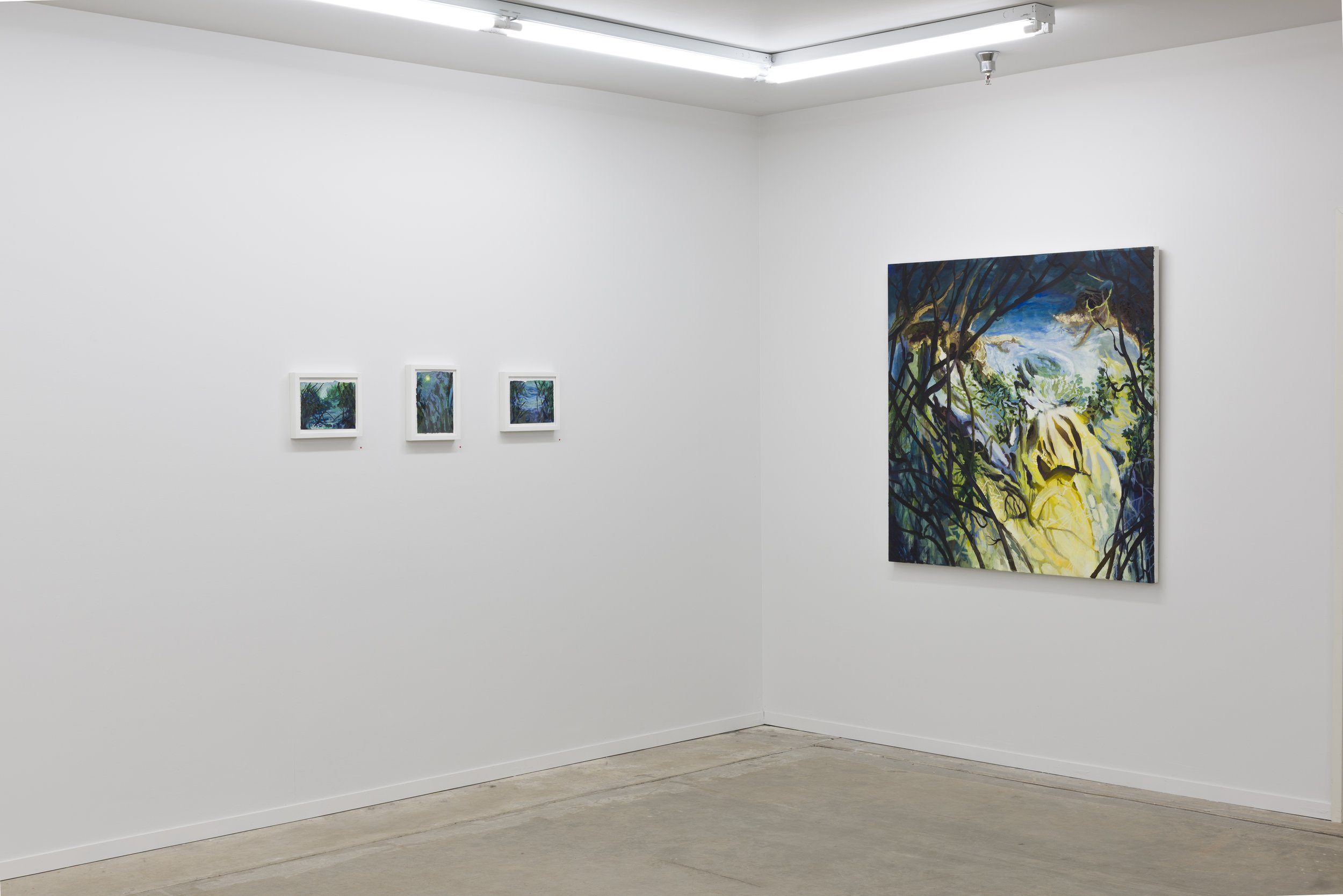
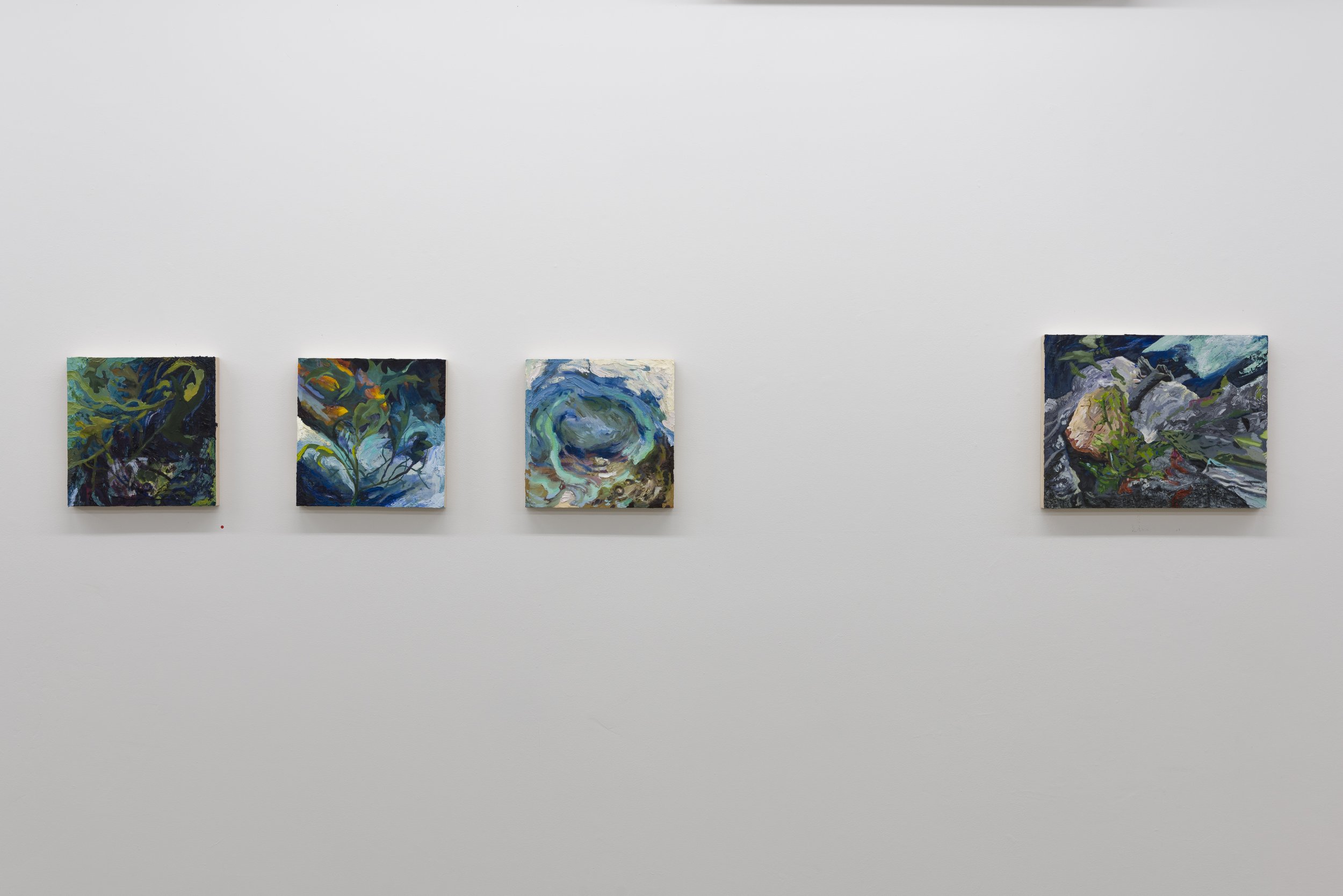
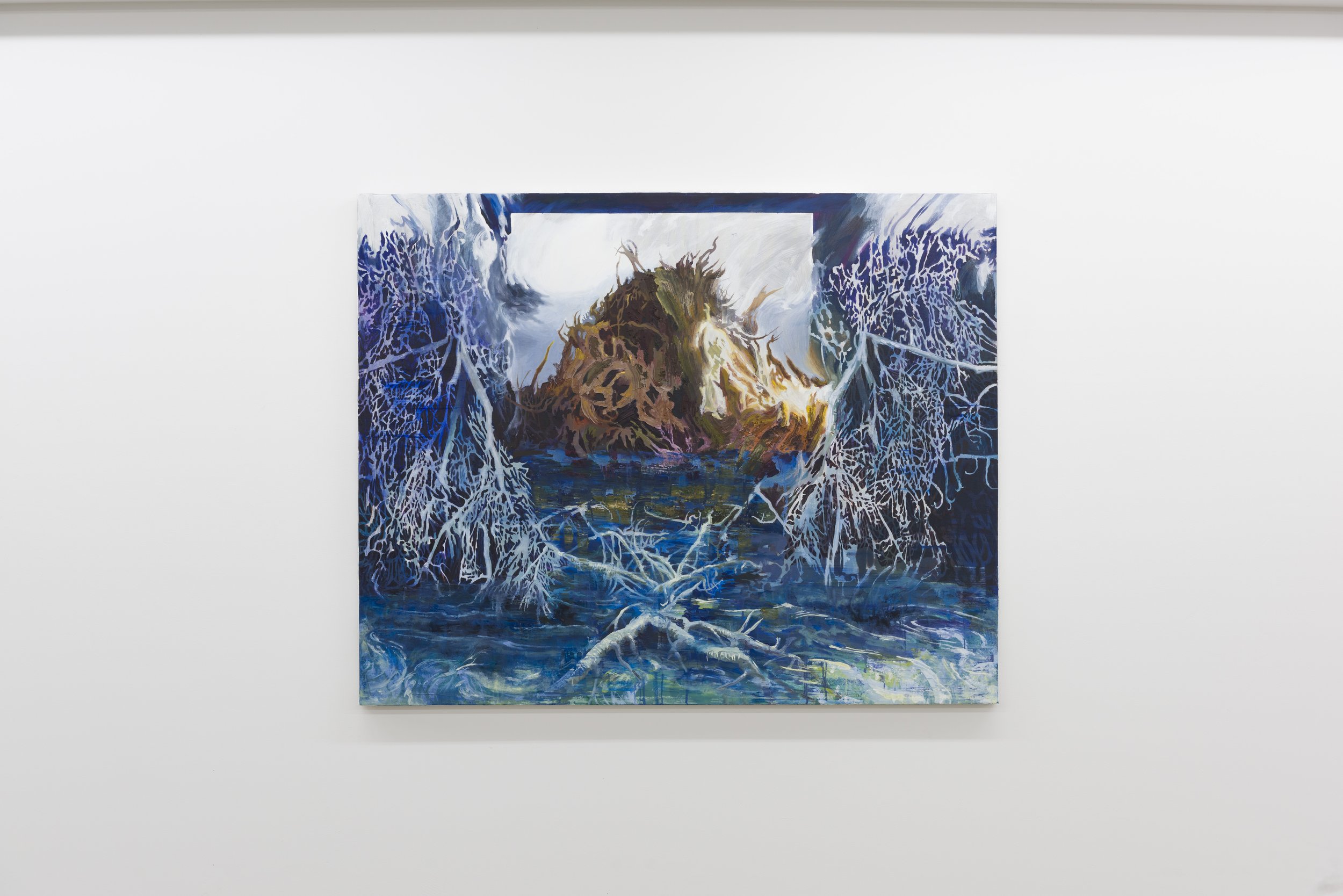
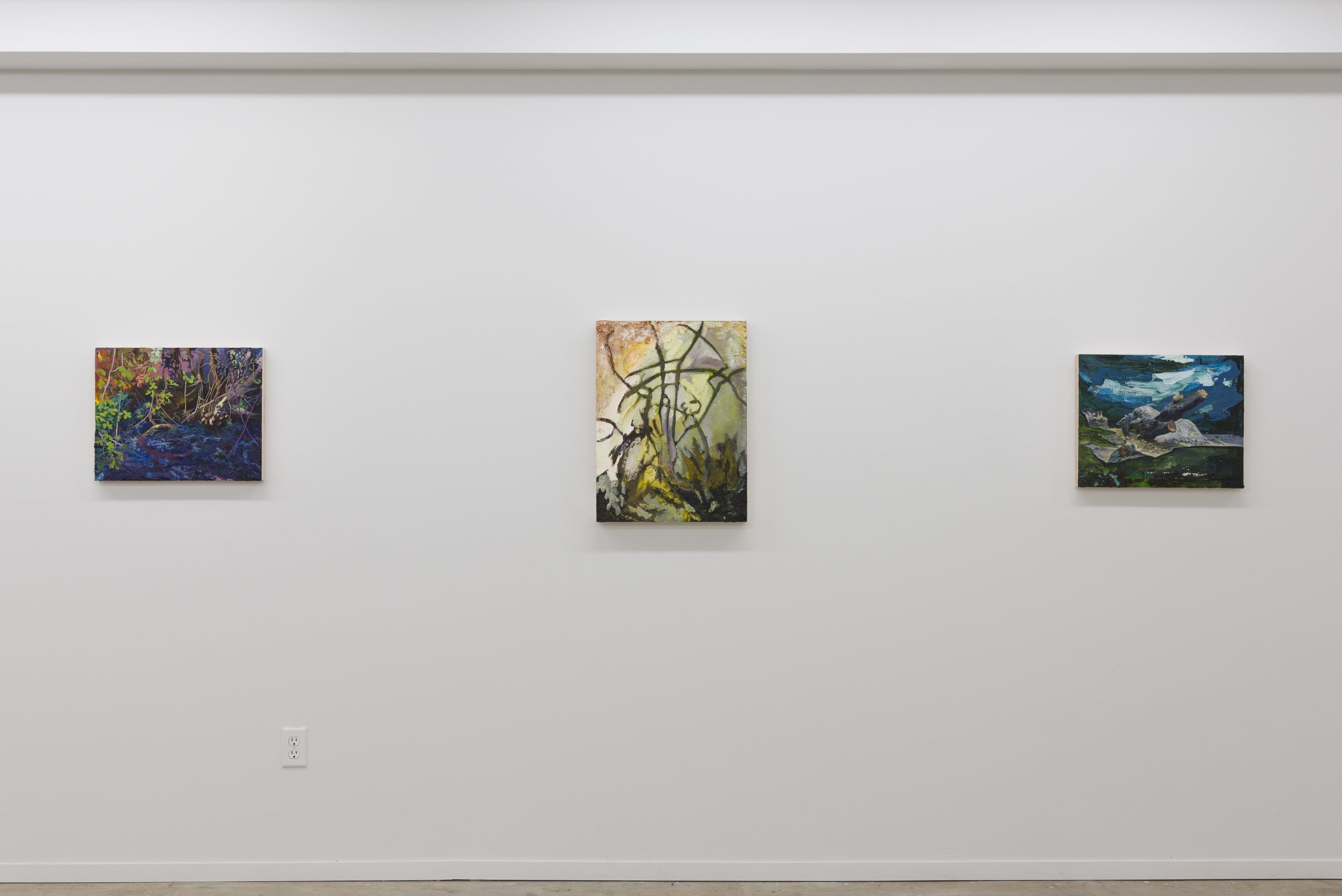
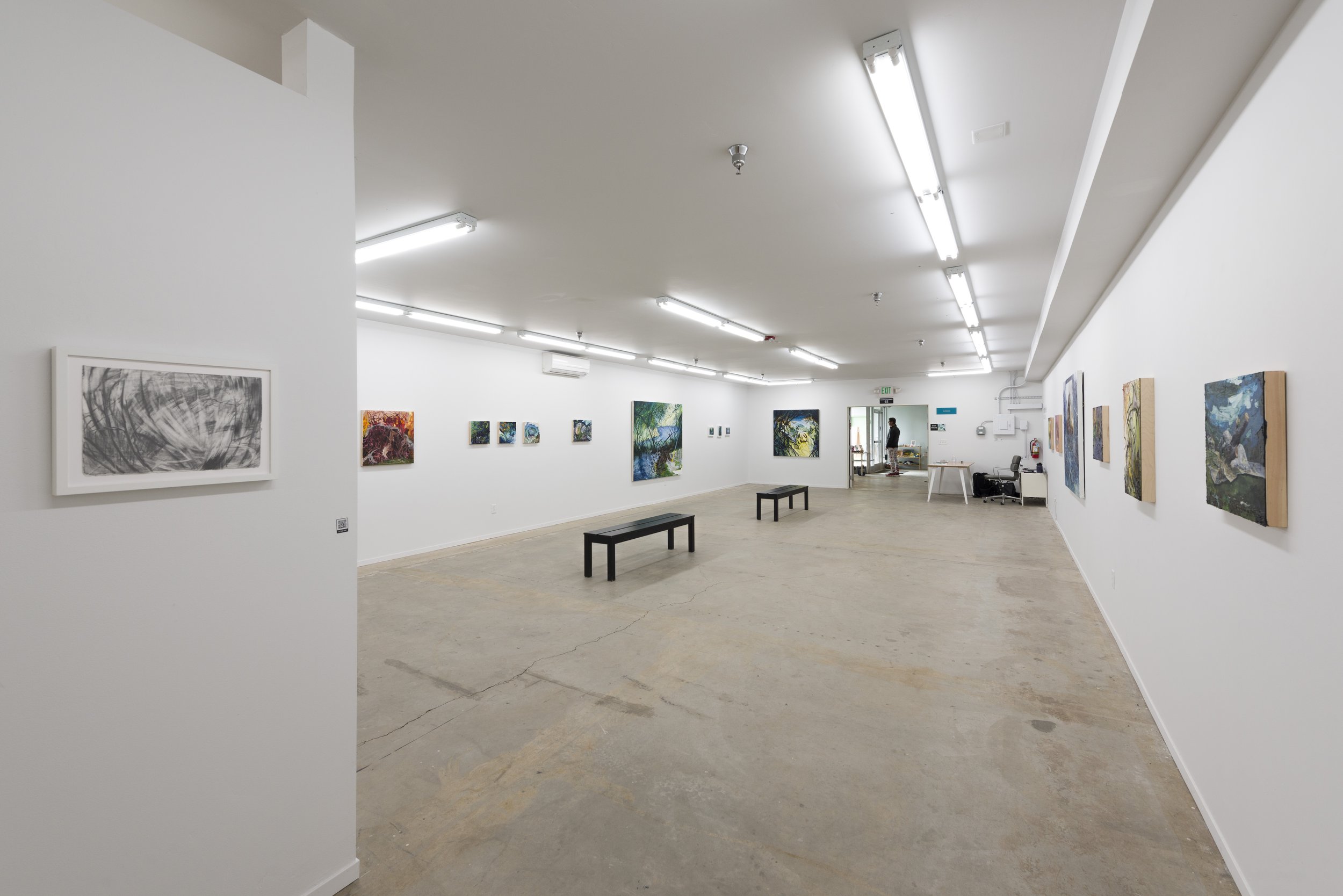

Photos courtesy of Muzi Rowe
Axis Gallery is pleased to present Hollow Veil, an exhibition of landscape paintings by Mirabel Wigon. These paintings question experience, immersion, and separation in an encapsulated world. This “world”, situated within the confines of the canvas, is a contrived unreality. Pristine and seemingly tranquil views are interrupted and broken, the surface image veiling a hollow depth. The paintings ask us to consider the potential growth from decay and the desire to control disorder.
Wigon’s work utilizes various strategies to impede, encapsulate, reflect, and cast doubt within seemly benign natural spaces. In Kant’s critique of Judgement, a sequence of statements illustrates paintings’ connection with gardening. “Painting, as the second kind of formative art, which presents sensible appearance in artful combination with ideas, I would divide into that of the beautiful depiction of nature, and that of the beautiful arrangement of its products. The first is painting proper, the second landscape gardening.” The attitudes regarding the act of gardening as a fine art came to fruition within the Western Canon as a “perfect” model which imitates nature. Jacques Ranciere states in The Time of the Landscape, On the Origins of the Aesthetic Revolution, “Like painting, the art of gardening is an art of appearances that imitates appearances…gardening belongs to the fine arts because what it produces are in fact artificial appearances.” Hollow Veil is a series of works that act as imperfect depictions of natural spaces. As historical landscape paintings or gardens have exemplified humanity’s mastery over nature, what tends to be denied in these sorts of curated spaces are the cycles of destruction, decay, and rebirth. The works in Hollow Veil provoke us to grapple with these cycles.
Living in the San Joaquin Valley, Wigon has been particularly informed by the sky and a land rife with fires and floods, a direct corollary to the looming environmental crisis. The paintings in Hollow Veil depict scenes upon scenes, appropriated combined imagery acting as an analogy for the ways that screens and digital windows populate your desktop. Forms bisect, overlap, and reside next to one another, mimicking a sort of digital workflow. Collage evokes a piece-meal world building strategy which in turn create a haphazard façade. Wigon states, “I’ve been deeply considering my desire to paint. Where does this feeling come from and what can be explored with this material? It begins with a desire to manifest my thoughts and feelings of the spaces and places I navigate. As a person of Assyrian-Polish heritage, I have always felt in-between spaces of understanding, never quite conforming to one definition of my identity. My paintings become an index of my existence in relation to the world around me. I find the complex material index and signs of painting to be not just poetry, but innumerable in their mysteries. It’s an apt metaphor for the complexity of our existence. Each painting is shrouded with this animistic veil, a presence that induces a physiological and psychological response but also falls empty and hollow.”
